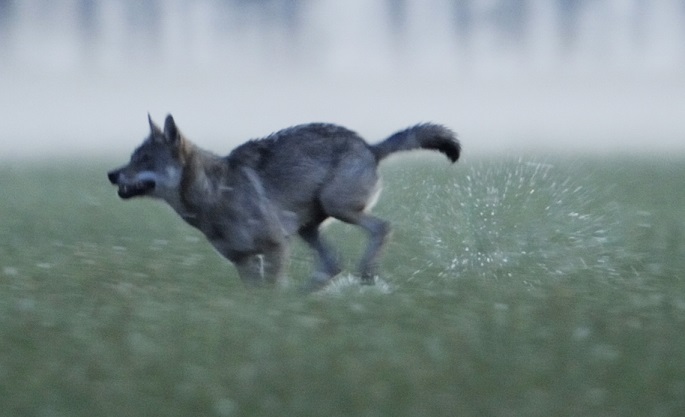Number of wolf packs increases in March 2018
Published : 24 Jun 2018, 01:43
There were a total of 20 wolf packs in Finland in March 2018, according to Natural Resources Institute Finland (Luke).
A year ago there were 14 packs, said a Luke press release.
In addition, there were five packs moving on both sides of the border between Finland and Russia (called border packs).
The wolf population is concentrated to Western Finland where approximately 70 per cent of wolves in Finland occurred in March.
The growth of wolf population in Western Finland is explained by several factors. Most of the wolf couples that have settled in Western Finland had pups in spring 2017.
The wolves in Western Finland also have a significantly better prey basis than in Eastern Finland. However, the reasons for the decline of wolf population in the east are poorly known.
In March 2018, there were 16 wolf packs in the western management zone. The total number of wolves in this area was 108–122, having been 70–80 a year earlier.
The number of wolves in the area has increased by approximately one-third from the previous estimate. The biggest change has taken place in Ostrobothnia, where the number of wolves had doubled.
There were a total of nine packs in the eastern population management area, five of which lived on both sides of the border of Finland and Russia. The total number of wolves was 52–57, having been 75–90 a year earlier.
The total number of wolves in Finland was 165–190, just under one-tenth more than a year earlier. The number includes half of the wolves living in the territories located on both sides of the border, as was done in the previous population estimates.
If the wolves living in the border territories are also counted as part of the Finnish wolf population, we arrive at 180–205 as the total number of wolves.
The wolf population in March represents the situation before reproductive season, when the number of wolves is at its lowest.
In summer, there are significantly more wolves than in March, because the wolf pups are born in April and May. A female wolf having pups for the first time usually gives birth to an average of 3.7 pups; older females usually have a few more pups.
The wolf population estimate is given on the basis of the situation in March, because most comprehensive data for producing the estimate are available at that time. Snow cover is one factor which allows plenty of track observations as well as samples of faeces and urine to be collected for DNA analyses.


